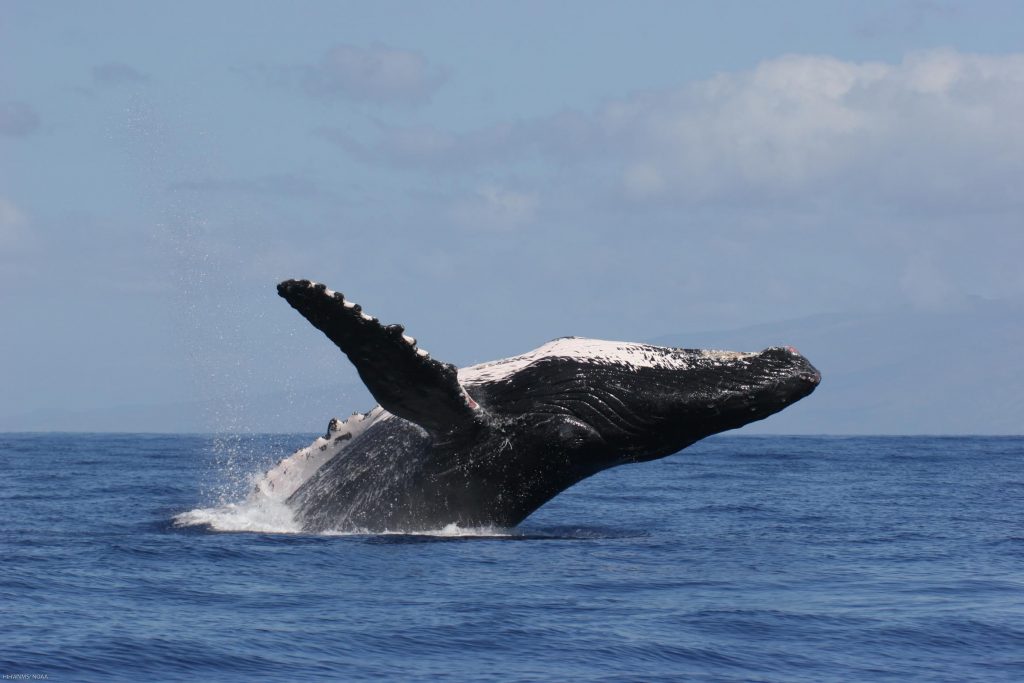Public is reminded to keep a safe distance with the return of humpback whales
The humpback whales are back!
Each year between November and May, thousands of humpback whales return to the Hawaiian Islands to breed, give birth, and nurse their young. During this time, boaters are reminded to reduce their speed and keep a safe and legal distance around whales.
“Humpback whale populations in Hawai‘i generally peak between January and February,” said Kim Hum, Superintendent of Hawaiian Islands Humpback Whale National Marine Sanctuary. “We want to remind boaters that collisions with whales are a very real risk for the next several months, and ask that you remain vigilant and slow down when in and around sanctuary waters to reduce the risk to the animals and people on board.”
During whale season, especially in water depths of 600 feet or less, boaters are asked to maintain a speed of 15 knots or less to minimize the risk of striking a whale. When directly approaching a whale to view it, or departing from viewing, speed should be reduced to six knots or less within 400 yards.
These speed recommendations for boating around whales were developed jointly by the sanctuary, the State of Hawaiʻi Department of Land and Natural Resources, Pacific Whale Foundation, and members of Hawaiʻiʻs on-water community. These and other best practices can be found here.
It is illegal to approach a humpback whale closer than 100 yards by any means including by boat, kayak, paddleboard, or drone, and closer than 1,000 feet by aircraft.
If you see an injured or entangled marine mammal, keep a safe and legal distance and call the statewide NOAA Marine Wildlife Hotline at 888-256-9840 or the U.S. Coast Guard on VHF channel 16 immediately.
“By following regulations and recommendations, ocean users can reduce their impact on the animals and their habitat and also play an important role by helping monitor humpback whales in sanctuary and nearby waters,” said Ed Lyman, Natural Resource Specialist, Hawaiian Islands Humpback Whale National Marine Sanctuary.
Hawaiian Islands Humpback Whale National Marine Sanctuary is one of the world’s most important whale habitats and the only place in the United States where humpback whales mate, calve, and nurse their young.
Designated in 1992, Hawaiian Islands Humpback Whale National Marine Sanctuary works to protect humpback whales and their habitat through research, education, conservation, and stewardship. The sanctuary is administered through a partnership of NOAA’s Office of National Marine Sanctuaries and the State of Hawai‘i Division of Aquatic Resources.
National Oceanic Atmospheric Administration
To report a vessel coming too close to a whale, call the NOAA Fisheries Enforcement Hotline at 800-853-1964, email respectwildlife@noaa.gov, or contact your local DOCARE office by phone, email, or on the DLNRTip app, which can be found here.
Additional wildlife viewing guidelines, safety tips, and hotlines can be found at https://hawaiihumpbackwhale.noaa.gov/visit/recreation.html. DLNR’s Division of Boating and Ocean Recreation’s “Boating with Whales” website can be found here.



















